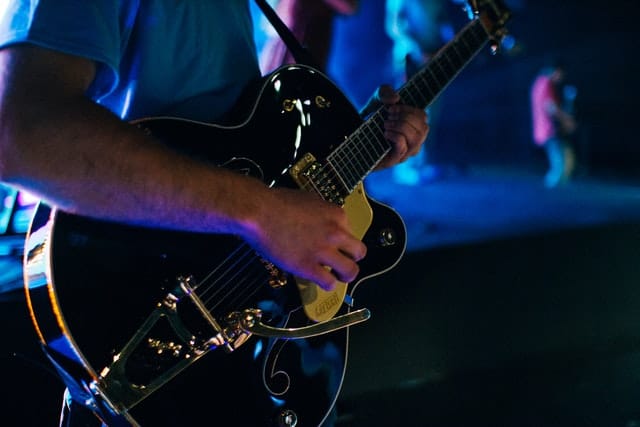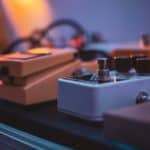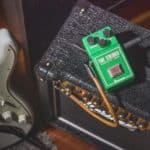Looper pedals are amazing tools for letting your creativity flow.
Many players also use them as practice tools at home.
The thing is, whatever use you give them, it’s important to make sure you are getting the most out of them.
This is what leads many musicians to the question I’m trying to answer here.
Where should you put your looper pedal?
Is it better to use it in front of your amp or into the FX loop?
Looper pedals usually run into the effects loop of an amp. This will allow you to record sound clips with and without distortion and amp EQ. Running the looper in front of the amp is the second-best alternative for amps without a loop, and can work as good if you don’t rely on amp distortion.
In this article, I will go in-depth about what are the main things you should consider to decide on where to place your looper.
After leaving this page you will have a clear idea about what will give you the best result possible based on your current gig.
How do looper pedals work?
Looper pedals, at their core, are pretty simple tools that record snippets of your playing, on command, and let you replay them in an endless repetition cycle.
This is their most basic functionality, however, naturally, with technological advances, most advanced units also let you work with overdubs, and sequencing and even some have their own built-in effects.
The ability to play with yourself is a great device to power up your practice, jam over ideas, or even dial a particular tone letting you focus on the gear rather than playing the instrument.
When to put your looper in the FX loop?
As loop pedals record samples of the signal they take in, it’s convenient to put them at the very last stage of your rig.
This will allow you to control what kinds of sounds you loop.
For instance, you can lay down a rhythm section with a clean tone, and then jam over it with distortion and delay.
To do so, and especially when your distortion comes from the power stage of your amp, it will be necessary to run your looper through the FX loop.
Remember, the FX loop on an amp is an input to hook signal modifiers after the pre-amp section, which usually distorts and EQs the sound, and before the power section, which amplifies and adds extra color and saturation.
When to put your looper in front of the amp?
Although using your looper in the FX loop is preferred, I can think of some cases where you could also use it in front of them. This is to say, before the preamp section.
First of all, if your amp doesn’t have an FX loop, there’s not much else you can do.
Running your looper in front of the amp is perfectly fine, however, your loops will be distorted if you crank the gain, and also modified by the EQ controls.
However, and as a second alternative, if you run your amp clean, and just as a pedal platform, putting your looper at the end of your signal chain, and before your amp will almost not result in a different experience than using it through the FX loop.
As you can see, there is no real use case where a looper in front of the amp is preferred, and it’s always a second-best alternative.
How would your looper work if you put it in front of the amp?
A looper will work just the same in front of your amp.
The only drawback to it is that any changes in settings you do to the amp will also affect your current looped sound clips.
You can read more about it in the following article:
Should you put your looper before or after pedals?
The more versatile approach as to where to put a looper pedal in your signal chain is always at the end of it. This is after every pedal, and after your amp’s preamp stage, if possible through an effects loop.
Having your looper after your other pedals will allow you to switch them on and off to get different sounds that you can then record and set for continuous repeats.
Any pedal you put after your looper will not only affect your live signal but also the repetitions the looper is outputting.
Of course, music is about experimenting, and there are no rules set in stone, but this is the conventional and more practical way of doing things, that most players will agree in.

Hello there, my name is Ramiro and I’ve been playing guitar for almost 20 years. I’m obsessed with everything gear-related and I thought it might be worth sharing it. From guitars, pedals, amps, and synths to studio gear and production tips, I hope you find what I post here useful, and I’ll try my best to keep it entertaining also.





